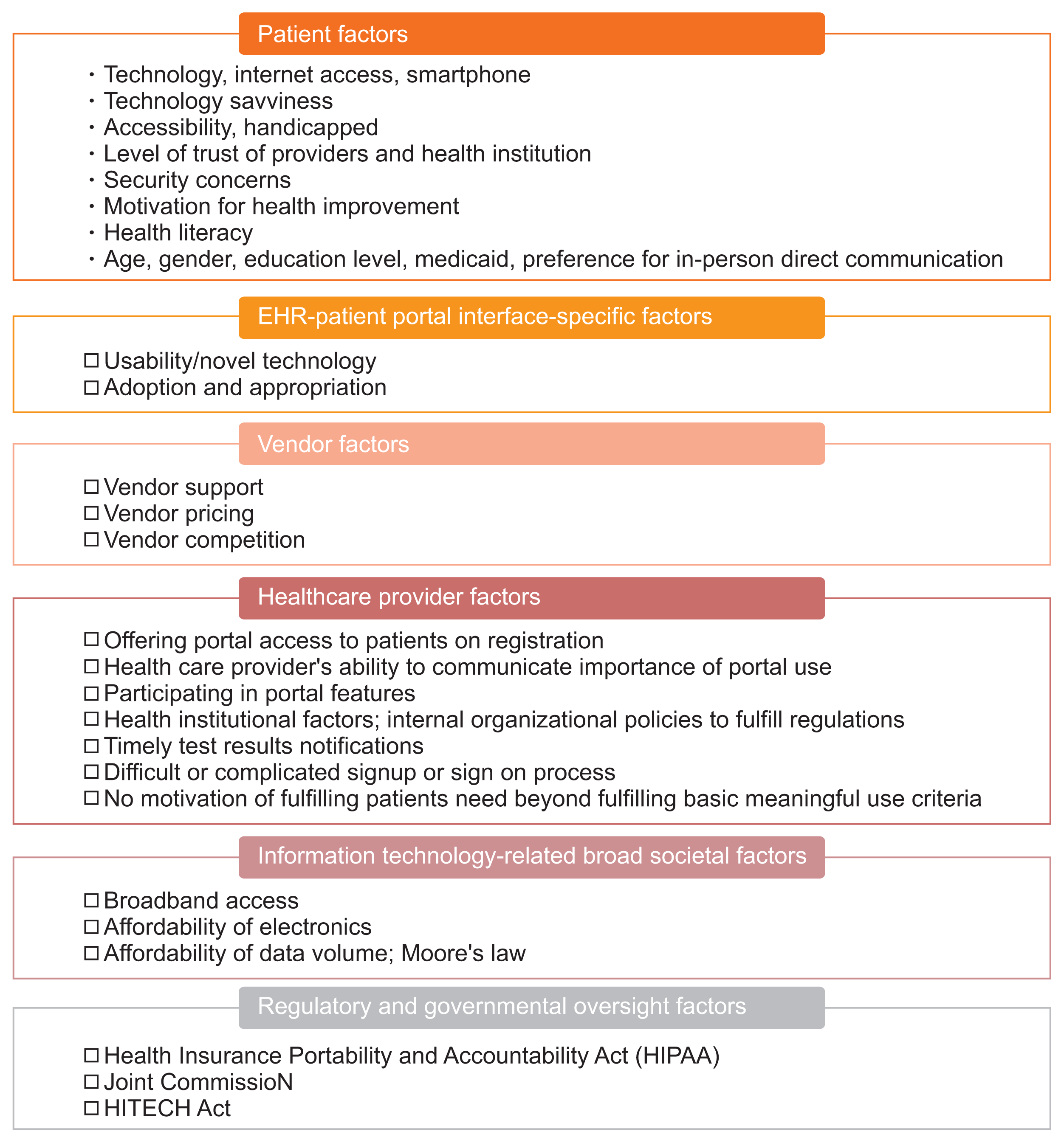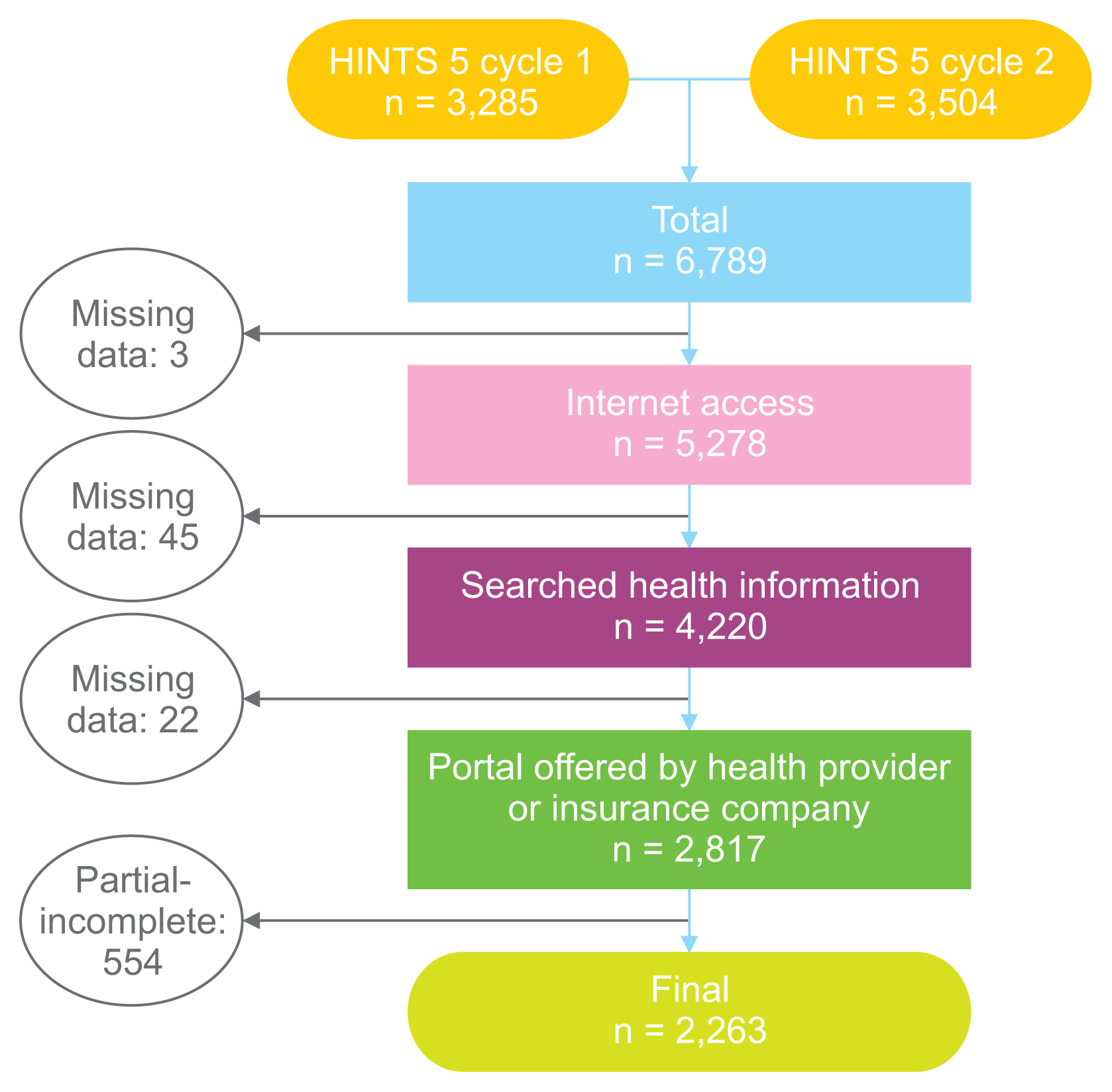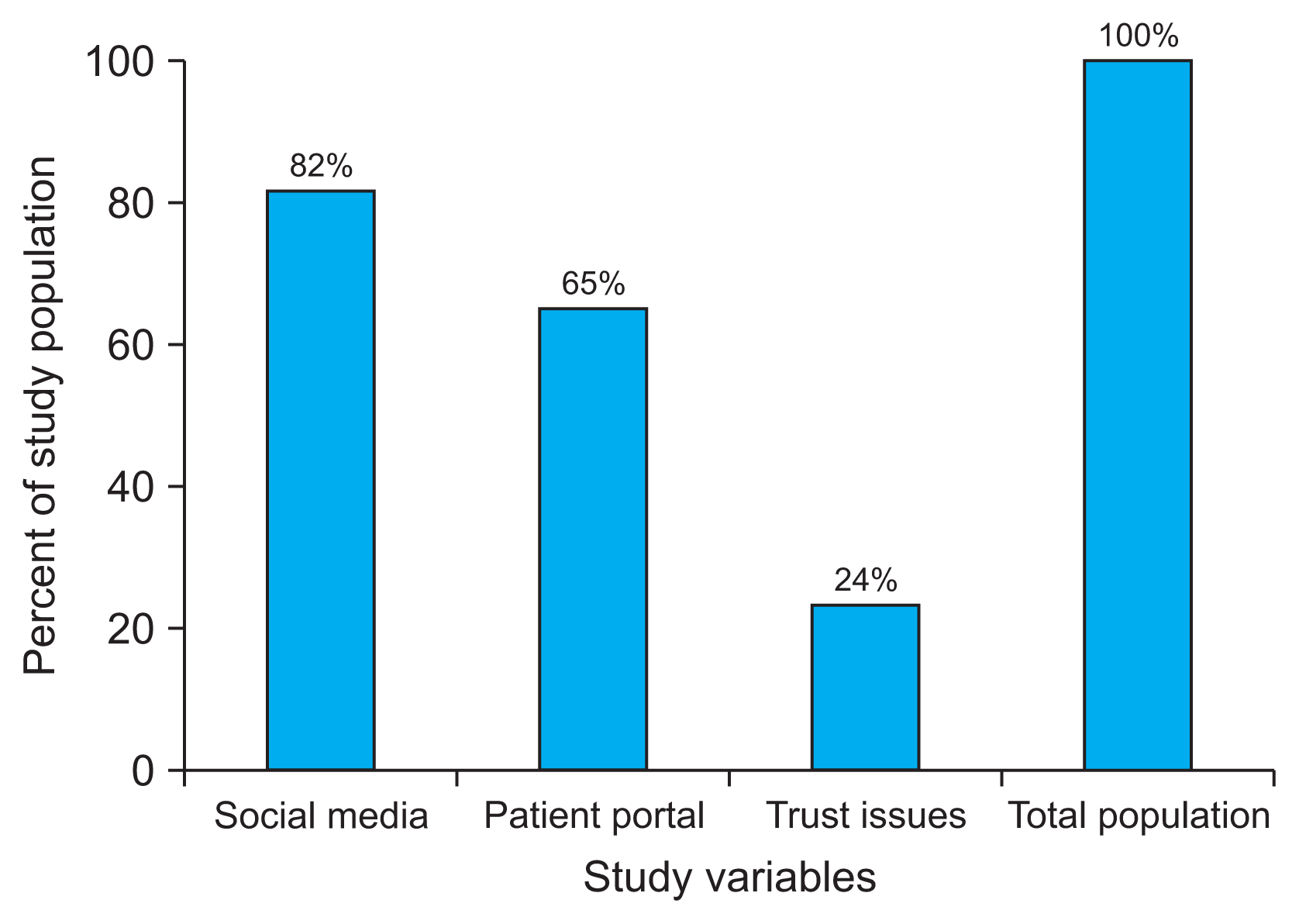I. Introduction
1. Study Justification and Study Question
Is there a health disparity/digital divide in the adoption of online patient portals in our selected patient population in comparison to the general population?
Is there a correlation between the level of patient trust and patient portal adoption in our selected patient population? [13]
Are usability and adoption issues likely the key determinant for the low rate of patient portal use?
Considering the ubiquity of social media use, we were also interested to determine whether social media use correlates with patient portal utilization in our selected patient population.
II. Methods
1. Design and Sample
2. Measures and Variables
1) Inclusion criteria variables
2) Outcome variable
3) Predictor variables
-
(1) Variables of interest
Social media use in the past 12 months (Question B10) was coded as yes or no.
No trust of health information from multiple sources (Question A6): This variable was re-coded to capture the essence of trust from multiple sources. The question was “How much do you trust health information from (1) family/friend, (2) newspaper, (3) radio, (4) doctor, (5) Internet, (6) charity organization, (7) government agencies, (8) religious source, and (9) television”. The survey responses were ordinal (4 “not at all”, 3 “a little”, 2 “some”, and 1 “a lot”). For a respondent, a total score of 36 (no trust at all), 27 (a little), 18 (some trust), and 9 (full trust). This was recoded as a binary variable of trust (some/full trust < 18) and no trust (a little/no trust > 18).
-
(2) Confounding variables
Age (Question O1) was re-coded as an ordinal variable: 18–49, 50–74, >75 years.
Gender (Question O14) was re-coded as male or female.
Marital status (Question O5) was re-coded as married (married and living as married) or not married (single, widowed, divorce, other).
Education (Question O6) used the question, “What is the highest level of education you completed?” This response was re-coded as high school or less, some college, and college degree or more.
Income (Question O19 HINTS 5 cycle 1, O17 HINTS 5 cycle 2) was re-coded as <$35,000, $35,000–$75,000, and >$75,000.
Health app use (Question B6 HINTS 5 cycle 1, B7 HINTS 5 cycle 2) was re-coded as yes or no (no, don’t know, no tablet or smartphone).
Chronic disease status (Question G3) was re-coded as yes or no. Additionally, depression and anxiety were re-coded as an independent predictor. The question was “Has a doctor or other health professional ever told you that you had any of the following medical conditions: diabetes, hypertension, chronic lung disease, arthritis or rheumatism, a heart condition, depression or anxiety”. “Yes” was coded if a respondent chose any of the options.
History of mental health issues (Question G3) was used as a variable derived from the chronic medical condition question. Patients who had anxiety or depression were considered positive for mental health history.
People in the household (Question O13) were re-coded as one person or more than one person in the household.
Medicaid health insurance (Question C7D) was coded as yes, if a patient chose Medicaid from the options in the response to the question, “Are you currently covered by any of the following types of health insurance or health coverage plans?”




 PDF
PDF Citation
Citation Print
Print






 XML Download
XML Download